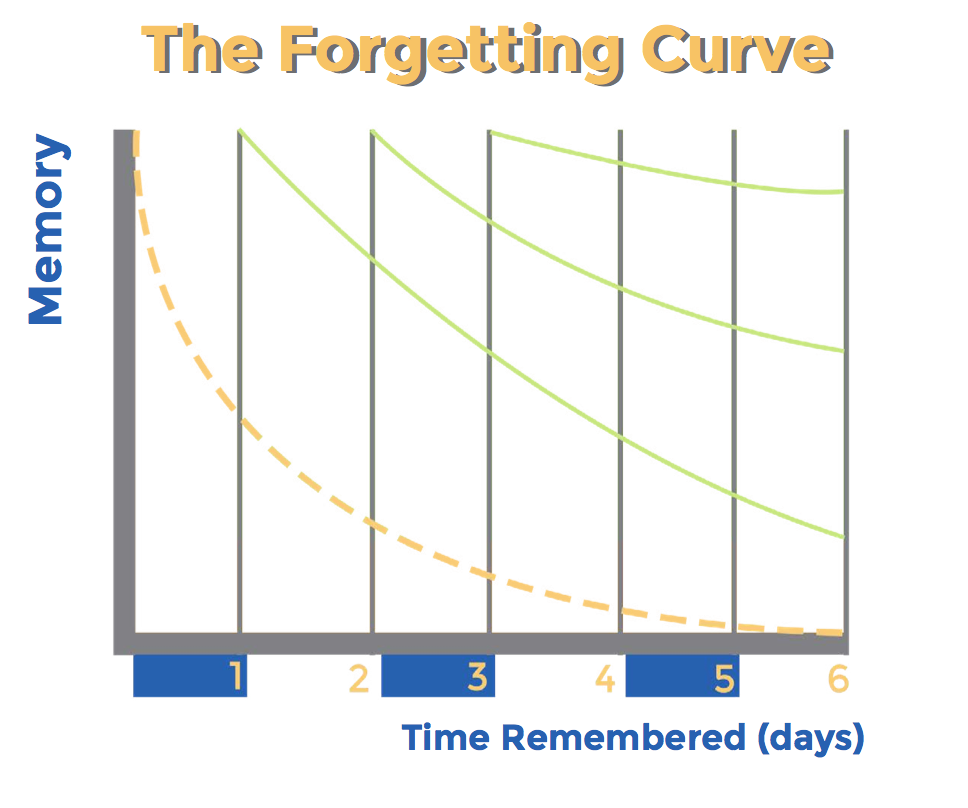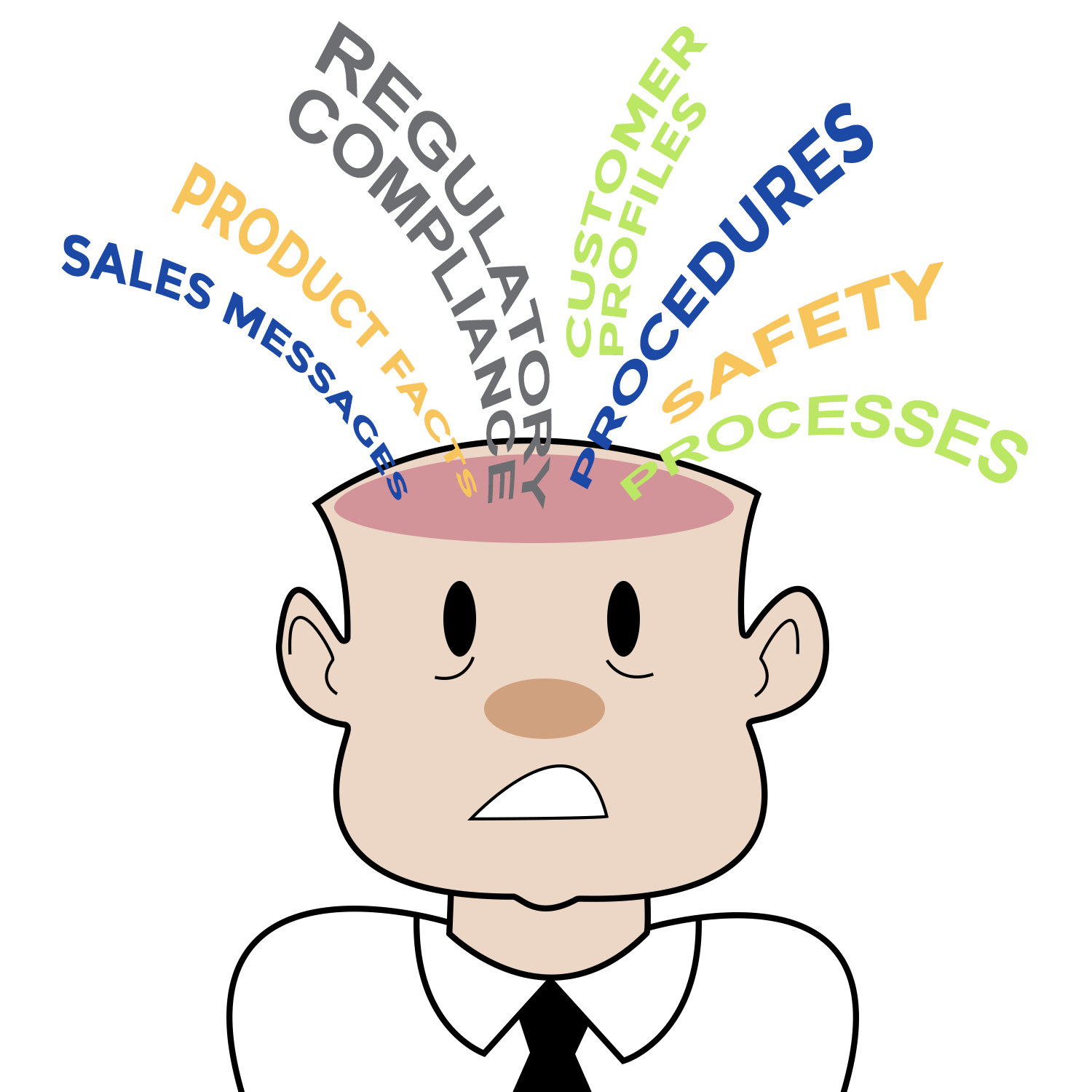This is an excerpt from our white paper, When Remembering Really Matters: Learning Strategies for Long-Term Retention. The white paper includes eight strategies to improve learning and remembering. Here is Part 2:
Remembering is Hard; Forgetting is Easy
No one says, “Hey. Let’s spend a bunch of time and money to create and implement a learning solution that no one will remember.” Yet every day stakeholders and designers make choices that sabotage the training effort and result in wasted dollars that produce no result. Learners take a course – and end up not applying what they learned because they don’t remember what they were taught.
 Herman Ebbinghaus was a psychologist who gained fame for his early studies in the late 1880s on memory. Based on his own research studies, he came up with the concept of the “forgetting curve.” He used his study data to create a curve that showed people will forget 90% of what they learn within 3 to 6 days unless learning is reinforced with multiple repetitions. Since then, thousands of studies have been done on spaced repetition, forgetting, memory, etc.
Herman Ebbinghaus was a psychologist who gained fame for his early studies in the late 1880s on memory. Based on his own research studies, he came up with the concept of the “forgetting curve.” He used his study data to create a curve that showed people will forget 90% of what they learn within 3 to 6 days unless learning is reinforced with multiple repetitions. Since then, thousands of studies have been done on spaced repetition, forgetting, memory, etc.
Will Thalheimer published a paper in 2010 that argues against Ebbinghaus’s global 90% statement. He points to these many subsequent studies – done in a more meaningful way – that show the percentage of forgetting is highly variable. It depends on numerous factors such as learners’ pre-existing knowledge, their motivation level, etc. However this still leaves the question:
What percentage of forgetting IS okay?
Let’s be optimists and assume only a 30% loss in memory after a few days’ time. Which 30% of your learning content are you okay with people forgetting?
Dr. John Medina, a molecular biologist, vividly describes the remembering problem in his book, Brain Rules. Medina says “memory takes an almost ridiculous amount of time to settle into its permanent form.” He then points out that organizations (schools and businesses) make the situation worse when “learning is supplied in consecutive, uninterrupted glops…the probability for confusion is in- creased when content is delivered in unstoppable, unrepeated waves.”
Let’s be honest. Forgetting is a major problem. A significant portion of what organizations label as training fits Me- dina’s descriptions: it’s delivered as a single “glop,” and large volumes of it are delivered up at once with nothing repeated. The intent in these instances is efficiency, but the result is the opposite because people don’t remember well in these scenarios.
[av_button label=’Access White Paper’ link=’page,11921′ link_target=” size=’large’ position=’center’ icon_select=’yes’ icon_hover=’aviaTBicon_hover’ icon=’ue887′ font=’entypo-fontello’ color=’theme-color’ custom_bg=’#444444′ custom_font=’#ffffff’]





